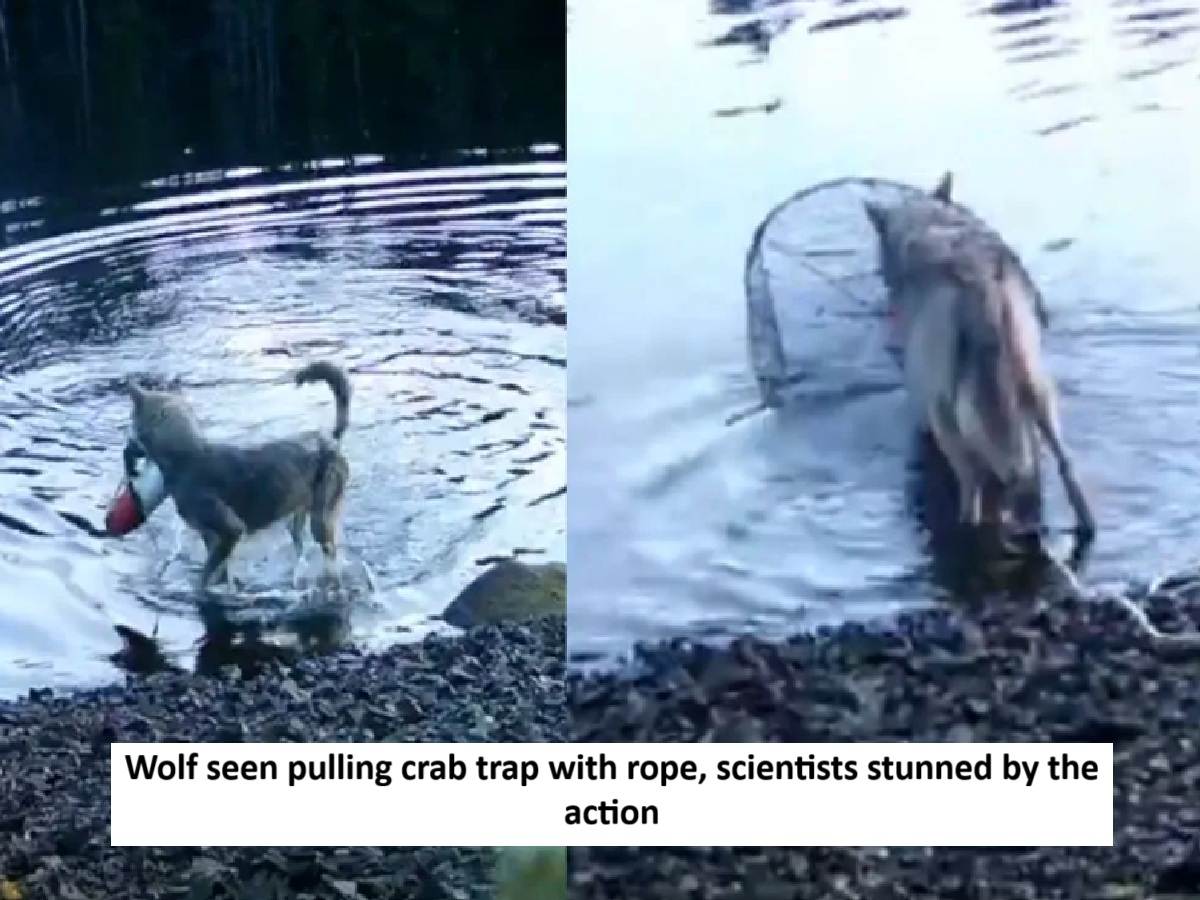
News Topical, Digital Desk : Sometimes, such incidents occur that even science is astonished. A similar video is going viral on social media these days, and it is truly astonishing people.
In fact, on the Central Coast of British Columbia, a female wild wolf was seen pulling a crab net from the sea and eating the bait. A video of this is rapidly going viral on social media. Experts believe this is the first documented case of an animal using a tool in the world.
Traps were set to protect against crabs.
The Heiltsuk, a local community, reportedly set these traps in the ocean. It's said they were set to control European green crabs, a species that harms local animals and plants. This program is part of an effort to protect them.
According to reports, Kyle Artell, assistant professor at the State University of New York's Office of Environmental Science and Forensics and co-author of a new study, said the traps were beginning to deteriorate and the damage appeared to suggest it could have been caused by a bear or a wolf. However, researchers initially believed that wolves or bears couldn't reach the traps in deep water because these animals don't dive.
The video surprised everyone.
The study found that some crab traps are set in shallow water, where bears or wolves can easily reach them. However, other traps are set in deeper water. The researchers assumed that wolves couldn't access these underwater traps because they don't dive. The question then arose: who could these traps be?
To identify it, researchers set up cameras to see what was caught in the crab trap. They thought it might be an otter or a seal. However, the cameras showed a wolf swimming toward shore with the floating buoy in its mouth.
The video shows the buoy being dropped onto the sand and a rope being attached to it. Using the rope, the wolf then pulled the crab trap out of the water. The wolf then dragged the trap to a shallower location and opened it to eat the bait, a piece of herring.
Researchers expressed surprise after watching the video
"We were surprised. It wasn't at all what we expected," said Artel, one of the researchers, who stressed that the wolf likely learned about the trap either by observing humans dropping it from boats.
Meanwhile, Marc Bekoff, an animal behavior expert and emeritus professor of ecology and evolutionary biology at the University of Colorado, said further research will answer questions like whether other wolves also learn to use the rope and whether this behavior is culturally transmitted within the population.
--Advertisement--

 Share
Share



